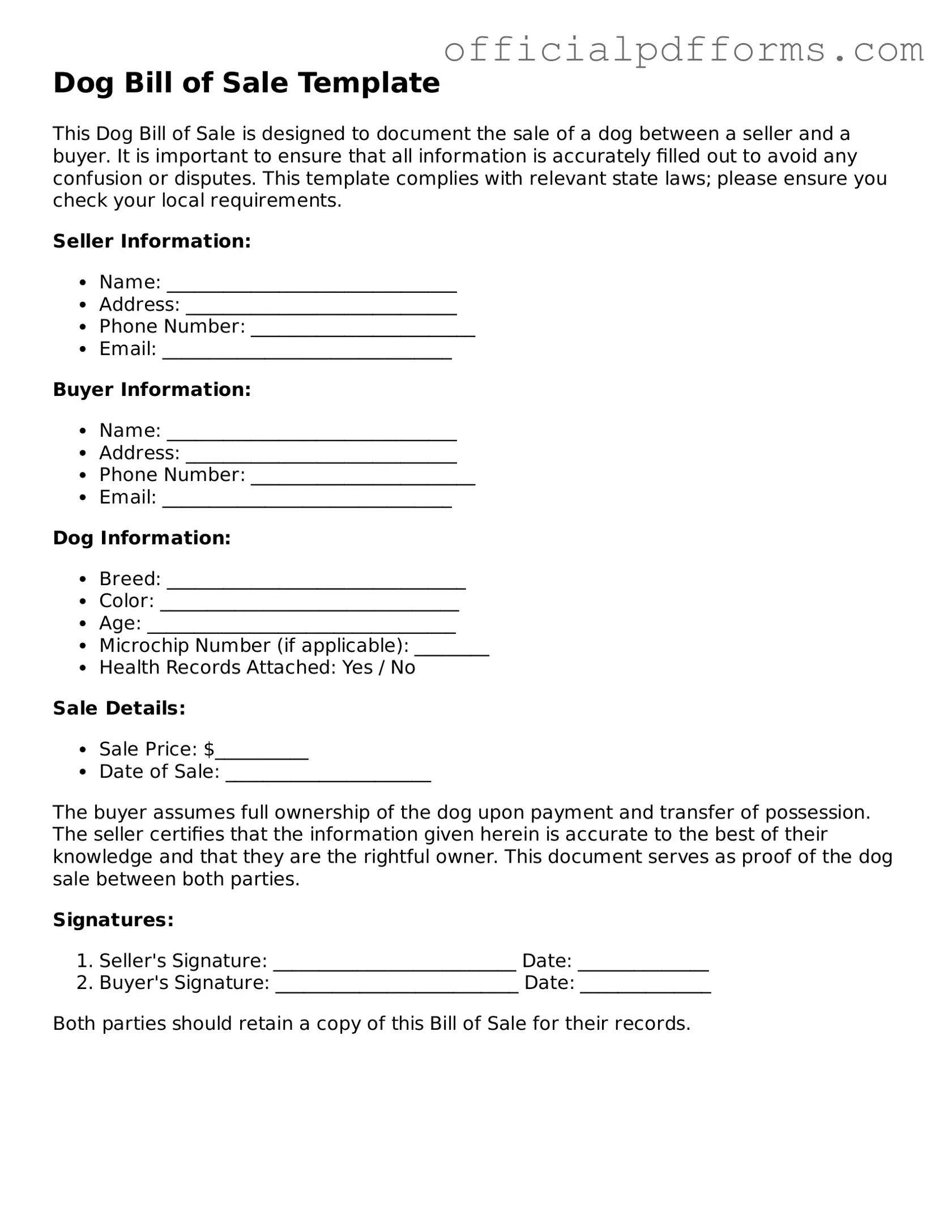What is a Dog Bill of Sale?
A Dog Bill of Sale is a legal document that records the transfer of ownership of a dog from one party to another. This form serves as proof that the seller has transferred their rights and responsibilities regarding the dog to the buyer. It typically includes details about the dog, such as breed, age, and any identifying features, as well as information about both the buyer and seller.
Why do I need a Dog Bill of Sale?
Having a Dog Bill of Sale is important for several reasons. Firstly, it provides legal protection for both the buyer and seller. It helps to clarify ownership and can prevent disputes in the future. Secondly, it may be required by certain states or local laws when transferring pet ownership. Lastly, it can serve as a record of the transaction for both parties, which can be helpful for future reference, especially for health records or registration purposes.
A comprehensive Dog Bill of Sale should include the following information:
-
The names and contact information of both the buyer and seller
-
The date of the sale
-
Details about the dog, including breed, age, color, and any unique identifiers (like microchip number)
-
The purchase price of the dog
-
Any warranties or guarantees regarding the dog's health or behavior
-
Signatures of both parties
Is a Dog Bill of Sale legally binding?
Yes, a Dog Bill of Sale is a legally binding document, provided it includes all necessary information and is signed by both parties. It acts as a contract that outlines the terms of the sale and the responsibilities of both the buyer and seller. However, it’s always a good idea to consult local laws to ensure compliance with any specific requirements in your area.
Can I create my own Dog Bill of Sale?
Absolutely! You can create your own Dog Bill of Sale. There are many templates available online that can guide you in drafting your document. Just make sure to include all relevant information and ensure that both parties sign it. Alternatively, you can also seek assistance from a legal document preparer to ensure everything is in order.
What if the dog has health issues?
If the dog has known health issues, it’s essential to disclose this information in the Dog Bill of Sale. This protects the seller from future liability and ensures that the buyer is fully informed before making the purchase. Including a clause about health guarantees or warranties can also help clarify the responsibilities of each party regarding the dog’s health.
Do I need to have the Dog Bill of Sale notarized?
In most cases, notarization is not required for a Dog Bill of Sale. However, having it notarized can add an extra layer of protection and authenticity to the document. It can be particularly useful if there are any disputes in the future. Always check local regulations to see if notarization is recommended or required in your area.
